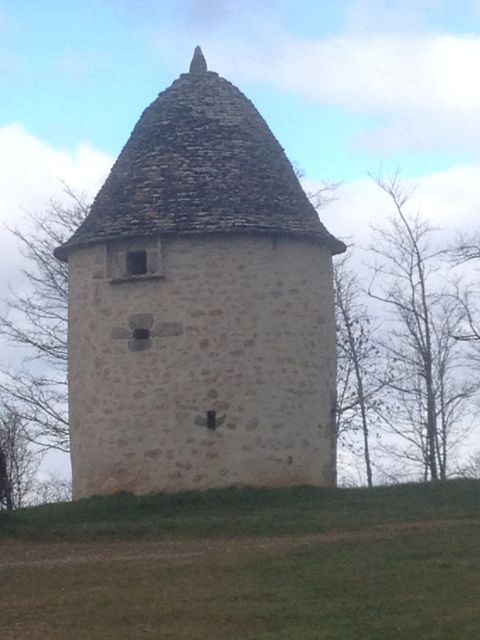Some of the things I know, I don’t actually know. A particular fact may be in my brain for years. It’s one of the things I know. And then one day, I discover I was completely wrong. Somewhere I pick up an incorrect piece of information and it gets logged into the database alongside all the other knowledge. This error can remain hidden for years like a dead mouse in the house. It’s just lying there waiting for exposure. If I don’t vacuum behind the sofa or look for the bug spray, it may never be discovered. This is unnerving and makes me wonder what else I don’t actually know.
I’ve been admiring the dove cotes in France over the last months. These are charming small buildings usually set in the corner of a farmer’s field. Often round, they have no windows and a few holes are near the top beneath the roof. I’m sure there is a pattern or system to these holes but I’ve never recognized it. Each time I see one, I tap into my memory bank to the chapter titled dove cotes and think about those doves carrying messages tied to their little feet. King Arthur’s spies sent him reports this way and exposed treatchery in the kingdom. Doves were also used in WW1 in the same way. After repeating this dove cote synopsis to myself over many weeks. I picked up a brochure at a tourist information office. It was about dove cotes in the region. Although I already knew everything about them, I went ahead and read it. To my astonishment, I learned that doves were kept by farmers for their manure! It is especially rich manure and the practice only completely stopped with the introduction of artificial fertilizers. Initially only nobles were allowed to have dove cotes. They were a prestige thing, like having a swimming pool. I read the entire brochure but there was no mention of communication or spies at all. Boy, was I wrong. I tried to think back to where I first got my wrong information but couldnt remember a specific source. Probably fairy tales, the place where I seem to have learned most of what I know.
I do know the source of where I picked up another piece of incorrect information. When we were staying at Chassenat, hunters were stalking boars. There were lots of boars in the area. As I walked through a wood, I looked nervously around for a boar to come tearing out of the brush and slash my belly open with his long tusks. Dangerous creatures. I also looked for a tree where I could climb to safety. These thoughts were quietly spinning on the hard drive behind my other thoughts when I suddenly realized what I was thinking and stopped short. My information was incorrect. Boars weren’t like that at all. Joost had taken photos of them with the hunters. They were cuddly, chubby little creatures. It’s true they were dead in the photos but I didn’t see any tusks. They certainly were not the slathering monsters in my fact base. The author of Old Yeller must never have seen a real boar. That’s where I learned about them. In one of the most dramatic events in the book, a wild boar attacks Jess and he climbs a tree to safety. His brave dog, Old Yeller fights with the boar and gets his belly slashed open by those tusks. (if you haen’t read the book, he survives – until the rabies) The boar in that story is nothing like a real boar. Those (admittedly dead) boars in Joost’s photos couldn’t hurt a flea. A swift kick would send them squealing back into the woods. It’s possible boars are different in the US but I revised the boar entry in my brain and walked calmly on.
These errors were made in the safety of my own head. I corrected them and nobody was the wiser. However, the great fear for us is that our mistakes are exposed in the public arena. The consequences of this range from embarrassment to humiliation to military engagement “You got your facts wrong there, bud” says the smarty pants in a bar, climate science review panel or Weapons Inspector. You feel like a dummy – but remember the flipside, nobody likes a know-it-all.



Leave a Reply